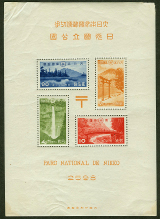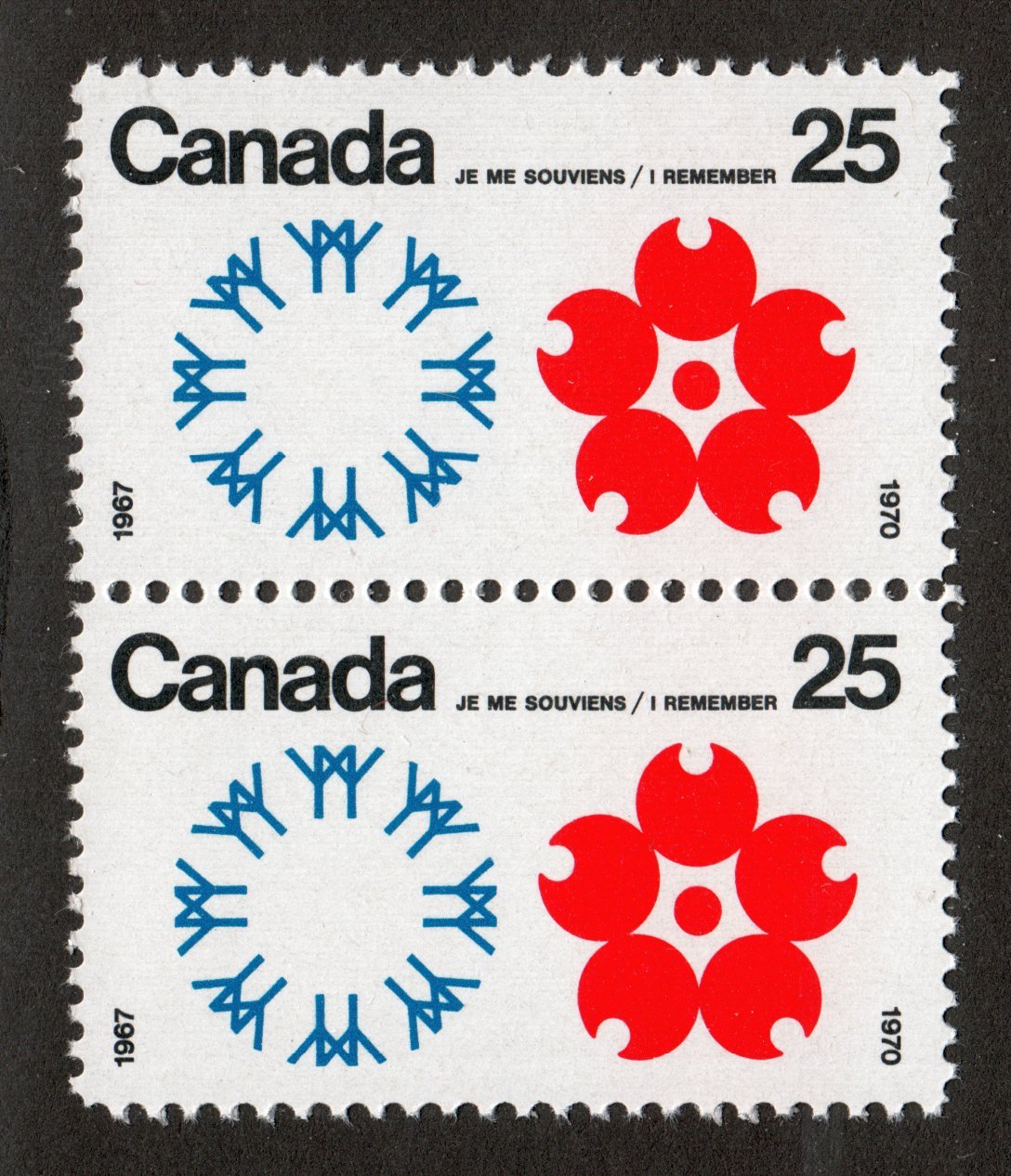between 1947-1950 in the Dutch Indies and aerogrammes used in Netherlands New Guinea
by Harry Julsing
1st of October 2010
The Netherlands Indies have a brief Aerogramme history. Initially the sheets were military, later civilian aerogrammes were introduced as well. The first issues are from October 1947 and come to a close at the end of 1950. Almost immediately after the Japanese surrendered, on September 2nd 1945, the Dutch sent the military to Netherlands Indies. This created the need for a postal service. The more soldiers were sent, the bigger the need. In 1945 almost 10,000 soldiers were sent. One year later this grew to 30,000. This amount included the 20,000 enlisted compulsory military servicemen of the "7 December" Brigade. Others were volunteers. Next to these troops there were Airforce and Royal Navy personnel, including, the Marines Brigade of more than 4,000 marines.
The Netherlands had their Military Aerogrammes first in 1947; colourful and covered with instructions. All bear printed 10 cent stamps portraying Queen Wilhelmina (initially 10 cent issued in 1940-'47, NVPH 335 and later 10 cent issued 1947-'48, NVPH 478) in reddishpurple, the colour as well as all the printing.


Mint and used Aerogrammes for Army Personnel

Aerogrammes for Navy Personnel
For the convenience of the Forces, each of the two distinct types are labelled with a large capital:
"L" (Uitsluitend voor correspondentie met militairen in Nederlandsch Indië. Niet behoorende tot Marine of Mariniers) - for Army personnel only - on one and
"M" (Uitsluitend voor correspondentie met marine personeel in Nederlandsch Indië.) - for Royal Dutch Navy personnel only - on the other,
accompanied by "Veldpostkantoor (army field post office) Batavia" on the "L" type; and "Marinepostkantoor (navy post office) Batavia (C.)" on the "M" type.
Two further types without imprinted stamps that carry stamp-sized spaces worded, "Postzegel van 10 cent" (no image available). For the front address panels and the back sender's panels are covered, except for the actual spaces for name and address, by a minuscule repetitive printing of the words "Luchtpostbladmilitairluchtpostbladmilitair...".
Yes, all in continuous non-stop, unspaced, wording as far as the pursuing eye can see, an overlay of printing providing some privacy for the interior letter that is effective and unusual. The issue of 1947-’48 has plain blue on the inside.
These types were for those at home to write to members of the Forces in the Dutch Indies. In complete contrast, the Active Service sheets flying the other way are very dour indeed. Some have an overlay, or often underlay, of coloured printing, but the paper is rough and tough and dull. One major benefit, not always seen on other country’s forces sheets is that all are postage free!
The military aerogrammes in my collection are from November 11th, 1947 to April 5th, 1950, from soldiers and marines and these come in various types. The type numbers used below are adopted from the Postzaken Posthistorische Studies VII, "De Postbladenkwestie" [Ir. C. Stapel] and Word's Air Mail Catalogue of Aerograms [Godinas].
|
Specification |
Image |
|
Type 1: Period used: from October 1947 Textual specifations: - Text in black White 80 grams paper Larger glue strip, not gummed |
|
|
Same type 1, as above. This aerogramme was sent by ship (zeepost) in stead of by airmail |
|
|
Type 3: Period used: from November 1947 Textual specifations: - Text in black White 80 grams paper thin glue strip, not gummed According to Ir.C. Stapel there are 10 different types 3. |
The sender forgot to add the city, so this letter has been forwarded to almost all cities in the country where they had a "Parklaan". To make things even more difficult, it seems that the addressee had moved to a new address in Rotterdam. |
|
Type 4: Period used; from November 1947 Textual specifations: White 80 grams paper Size 122 * 95 mm when folded, Small glue strip, not gummed |
|
|
Type 5: Period used: in 1948-'49 Textual Specifications: Gray 80 grams paper Size 122 * 95 mm when folded Small glue strip, not gummed |
|
|
Type 8: Period used: from June 1948 Textual Specifications: Gray 80 grams paper Size 123 * 95 mm when folded Small glue strip |
|
|
Type 9: Period used: from July 1948 Textual Specifications: White 80 grams paper Size 123 * 96 mm when folded Larger glue strip |
|
|
Type 11: Period used: from January 1948 Textual Specifications: White 80 grams paper Size 124 * 83 mm when folded Amount printed 15,000,000 |
|
|
Type 12a: Period used: From April 1949 Textual Specifics: White 70 grams paper (paper and print colour can vary) Size 165 * 90 mm when folded Larger glue strip |
|
|
Type 12b: Period used: From April 1949 Textual Specifications: White 70 grams paper (paper and print colour can vary) Size 165 * 90 mm when folded Larger glue strip |
|
|
Type 14a: Period used: From April 1949 Textual Specifications: White 70 grams paper (paper and print colour can vary) Size 165 * 90 mm when folded Larger glue strip |
|
|
Type 14x (Godinas AM217 and AM217a): Period used: from December 1949 Textual Specifications: White 70 grams paper (paper and print colour can vary) Size 165 * 90 mm when folded |
|
| This overview of military aerogrammes is not complete, more types have been used, see for more information "De postbladenkwestie" in Dutch by Ir. C. Stapel and the "World's Air Mail Catalogue" by François Godinas. | |
|
Other types of military airmail during that period (no aerogrammes) |
|
|
RAPWI RAPWI (Recovery of Allied Prisoners of War and Internees). Their role was to ensure speedy repatriation of prisoners of war and civilian internees. This cover was sent Feb. 15th, 1946 by Sergeant of the Royal Netherlands Indies Army, based in Batavia (now Jakarta) to family in Rotterdam. |
|
|
Field post covers Before the aerogrammes were available, military personnel used regular covers. Active military (in actieve dienst) letters were postage free With either veldpost or local cancellation |
|
|
Two interesting covers The first with military R.N.F. Censor and regular Balikpapan cancel. The second is a Dutch Official cover, using a British Officials airmail cover used by the War Department (Departement van Oorlog)- Military hospital Batavia, with a 1947 fieldpost Batavia CDS |
|
|
Easter greetings from the Indies May 19th, 1947 |
|
|
Private issue Private Airmail cover, sent October 2nd 1947 by an aide-de-camp from the Huzaren van Boreel, based at Padang at Sumatra to the Cavalry base in Amersfoort, Netherlands |
|
|
Mail from the Netherlands to military personnel in the Dutch East Indies Proof that these were difficult times. This particular letter never made it to the addressee and was finally returned to sender. |
Netherlands New Guinea
The earliest were a pair of for Netherlands Nieuw Guinea in 1955: 15 c for local use and 35c for writing to the homeland with the word "Aerogramme" printed and the stamps respectively deep green and reddish-purple. The 15 cents issue was re-printed on lighter paper in 1957.

Both issues come overprinted "UNTEA" (United Nations Temporary Executive Authority) as well, as trouble flared and the universal peace providers were called in on the 1st of October 1962.
Three types of "UNTEA" overprint are known (see World's Air Mail Catalogue by François Godinas, edition 1974).
a) small sized overprint 14 mm
b) middle sized overprint 16 ¾ mm thin letters
c) large overprint 17 ½ mm thick letters
References
- The first publication about Aerogrammes used in the Netherlands Indies was found in the "Nederlands Maandblad voor Philatelie", issued from 1948 - 1950, by Mr. G.J. Broekman in his column "Poststukken".
- In 1953 François Godinas included some in his World Catalogue for Aerogrammes. In later issues new findings were included.
- In 1955 Tocila mentioned some in his Catalogue for Aerogrammes from the Netherlands and Colonies. He is far from complete as he did not include the ones mentioned by Broekman.
- Word's Air Mail Catalogue of Aerograms (Air letter sheets and Air post stationary), edition 1974 by François Godinas
- Postzaken Posthistorische Studies VII, "De Postbladenkwestie" by Ir. C. Stapel, issued by de Nederlandse Vereniging van Poststukken- en Poststempelverzamelaars 1980 in Dutch
All images shown in this essay are from my own collection.







